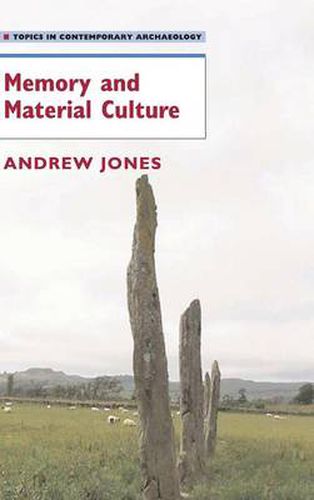Readings Newsletter
Become a Readings Member to make your shopping experience even easier.
Sign in or sign up for free!
You’re not far away from qualifying for FREE standard shipping within Australia
You’ve qualified for FREE standard shipping within Australia
The cart is loading…






We take for granted the survival into the present of artifacts from the past. Indeed the discipline of archaeology would be impossible without the survival of such artifacts. What is the implication of the durability or ephemerality of past material culture for the reproduction of societies in the past? In this book, Andrew Jones argues that the material world offers a vital framework for the formation of collective memory. He uses the topic of memory to critique the treatment of artifacts as symbols by interpretative archaeologists and artifacts as units of information (or memes) by behavioral archaeologists, instead arguing for a treatment of artifacts as forms of mnemonic trace that have an impact on the senses. Using detailed case studies from prehistoric Europe, he further argues that archaeologists can study the relationship between mnemonic traces in the form of networks of reference in artifactual and architectural forms.
$9.00 standard shipping within Australia
FREE standard shipping within Australia for orders over $100.00
Express & International shipping calculated at checkout
We take for granted the survival into the present of artifacts from the past. Indeed the discipline of archaeology would be impossible without the survival of such artifacts. What is the implication of the durability or ephemerality of past material culture for the reproduction of societies in the past? In this book, Andrew Jones argues that the material world offers a vital framework for the formation of collective memory. He uses the topic of memory to critique the treatment of artifacts as symbols by interpretative archaeologists and artifacts as units of information (or memes) by behavioral archaeologists, instead arguing for a treatment of artifacts as forms of mnemonic trace that have an impact on the senses. Using detailed case studies from prehistoric Europe, he further argues that archaeologists can study the relationship between mnemonic traces in the form of networks of reference in artifactual and architectural forms.